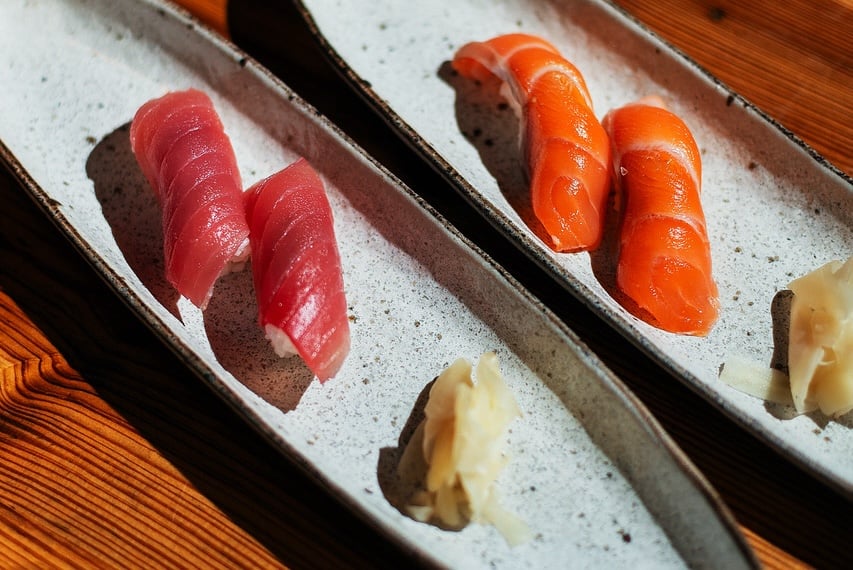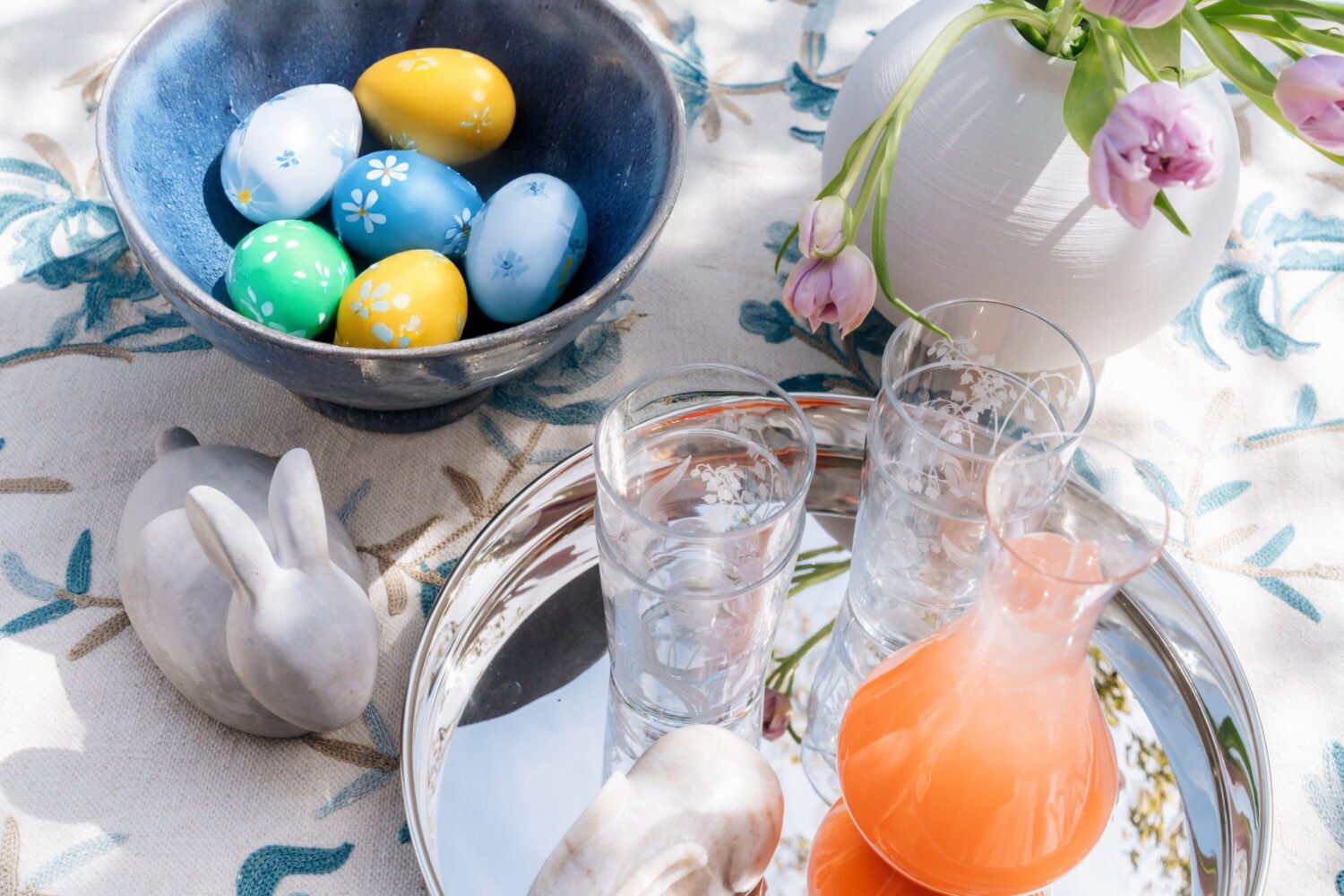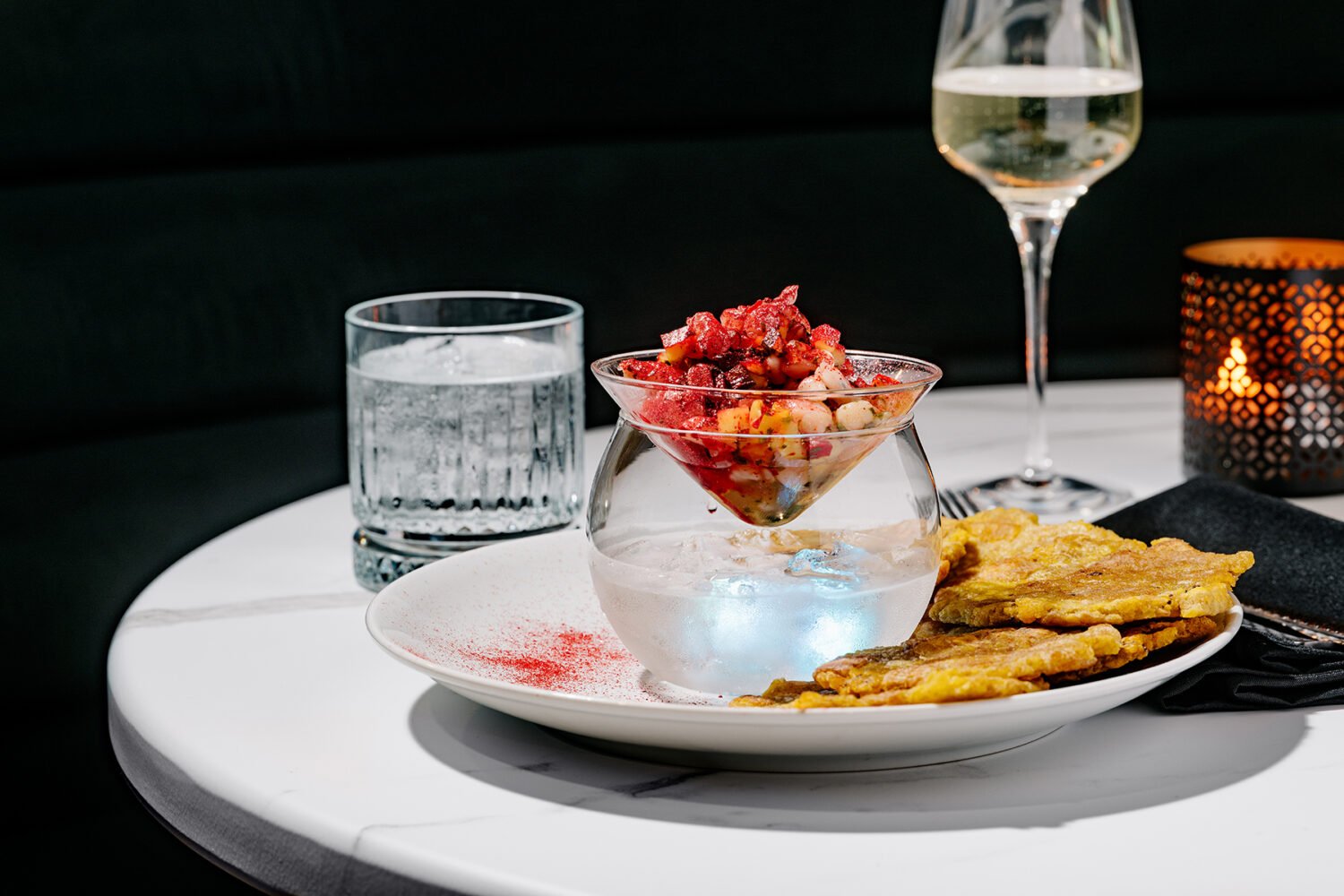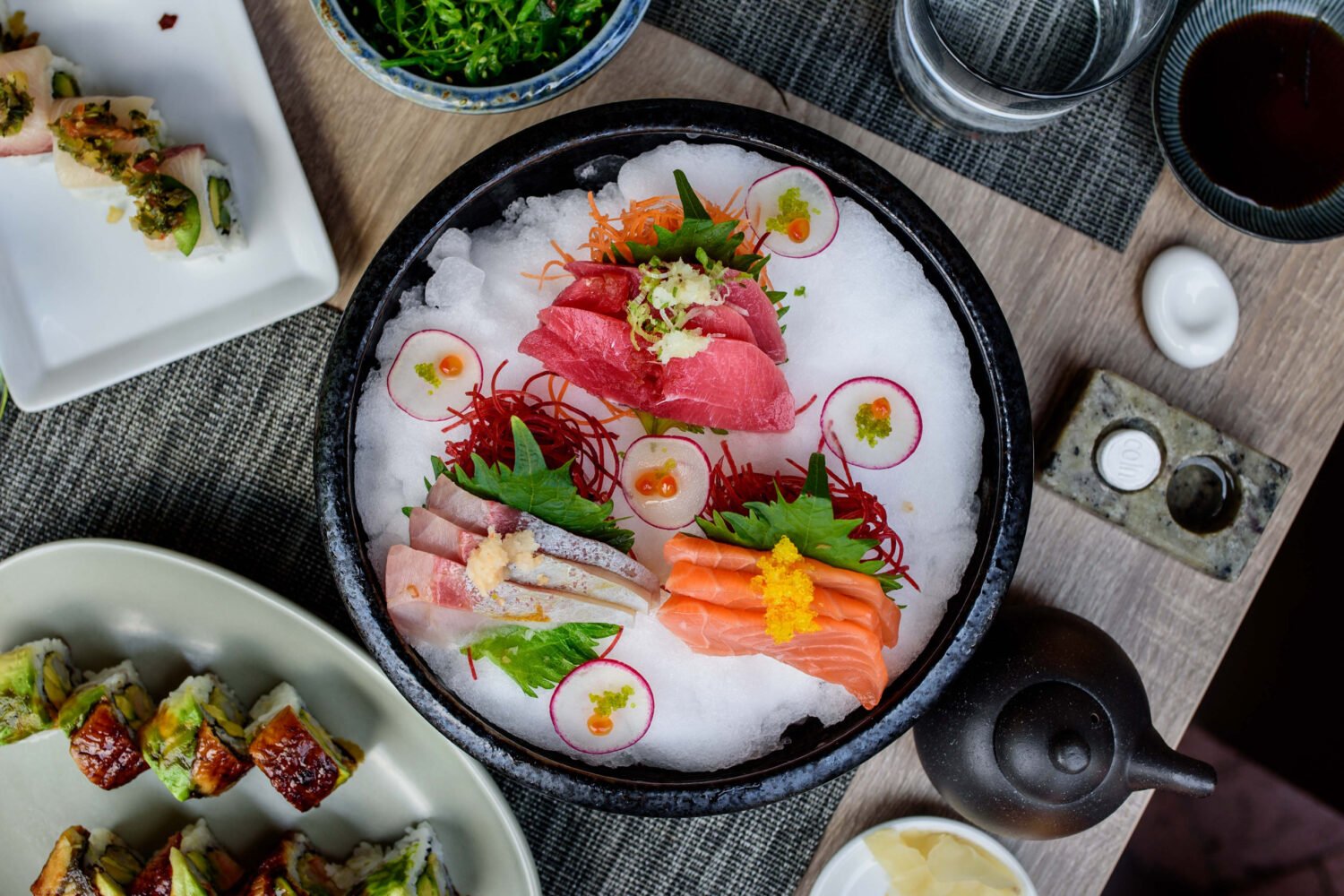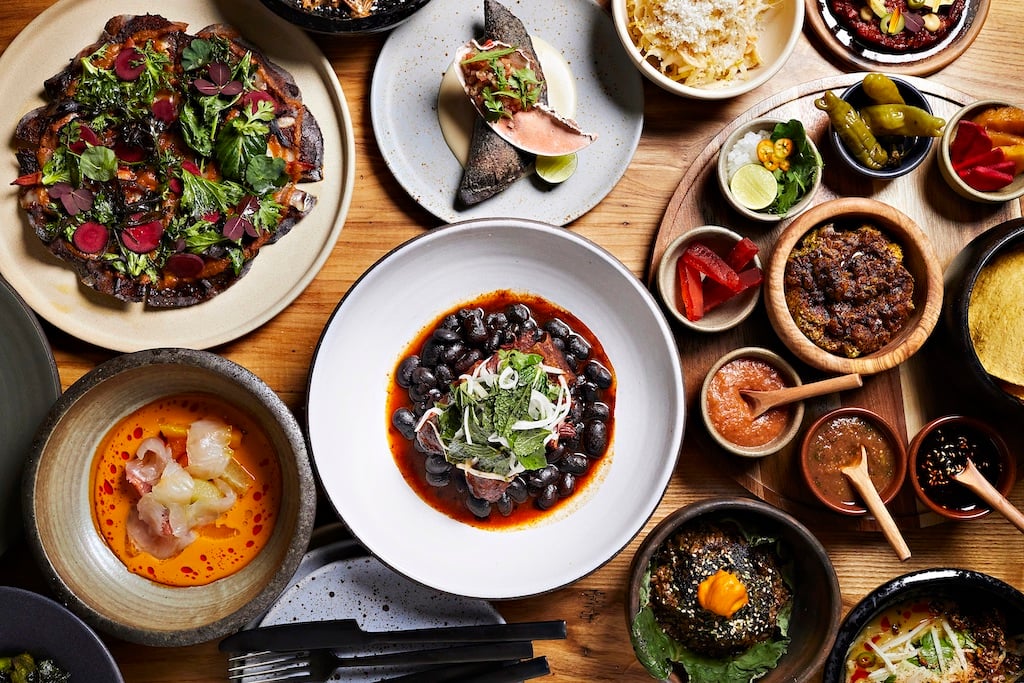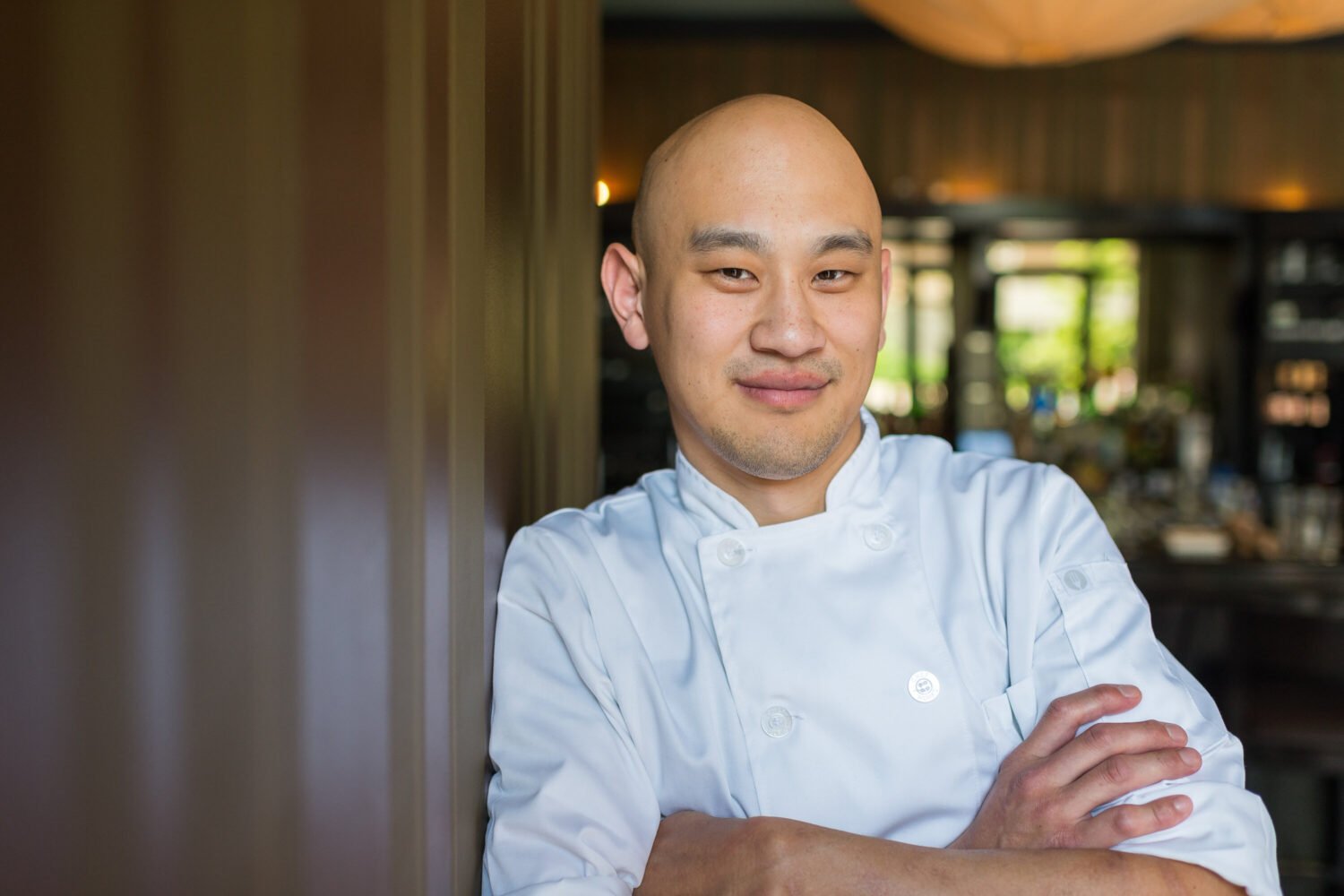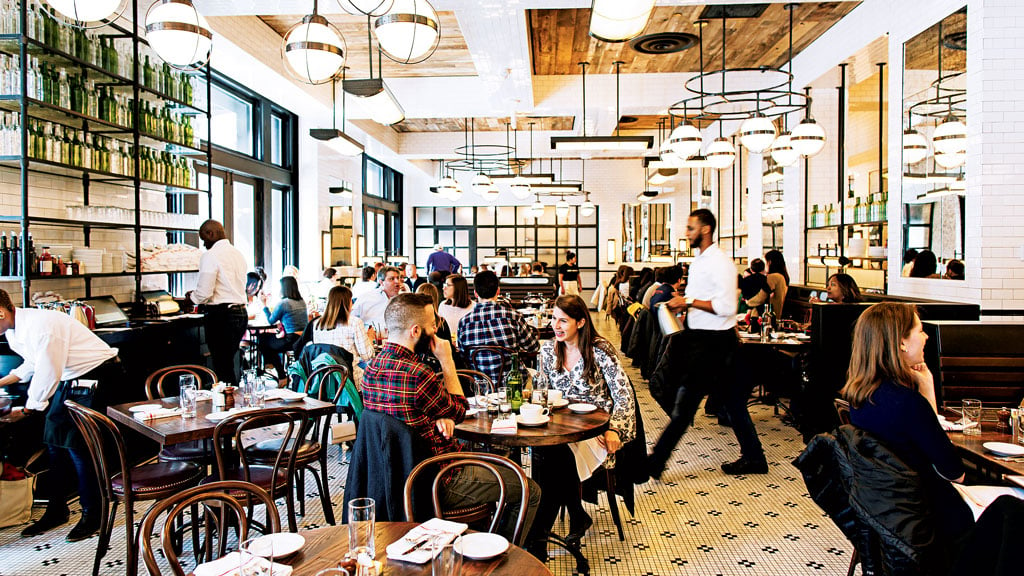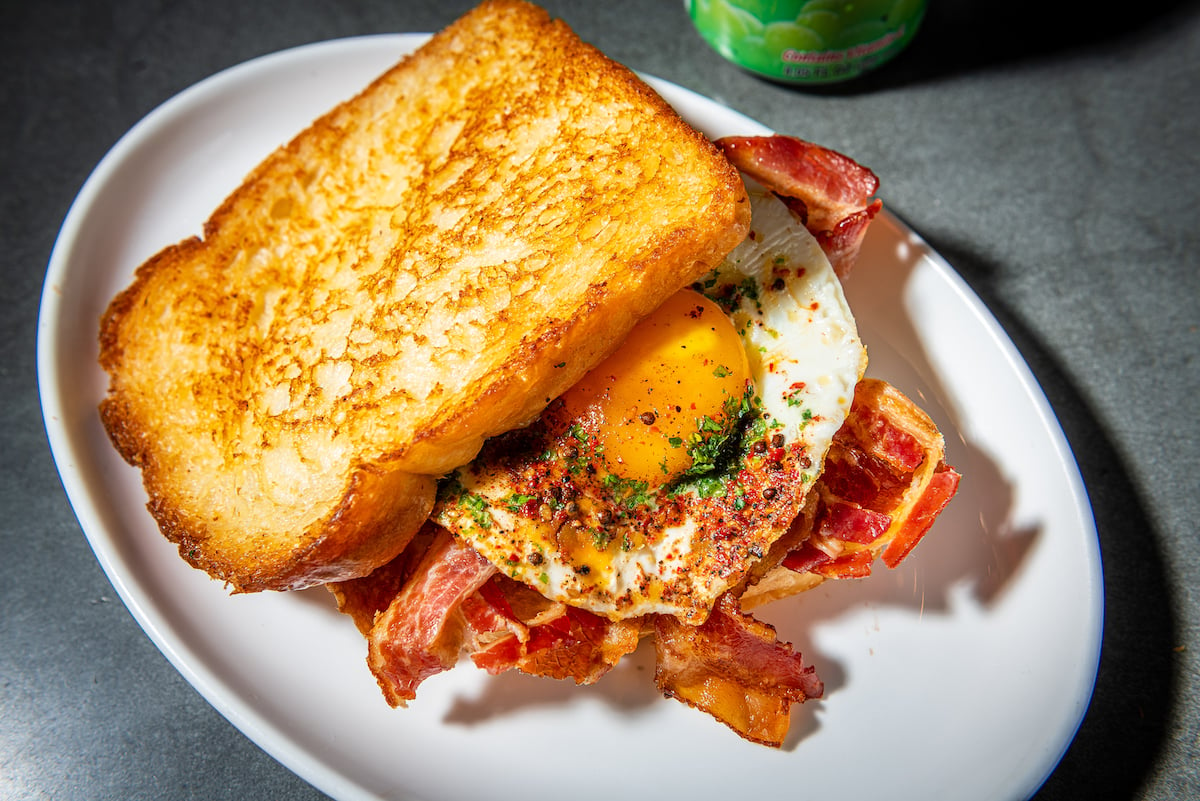Think you know what makes great sushi? Sushiko and Daikaya owner Daisuke Utagawa explains a few things that might surprise you.
The freshest fish isn’t necessarily the best.
As fish thrash around before suffocating out of water, their bloodstream fills with stress hormones that make the flesh taste off and rot faster. To counter this, some fishermen use a process called ikejime, which involves stabbing the fish in the brain and draining the blood. These fish actually get better and more complex with a little age, just like a bottle of wine or steak. Some high-end sushi restaurants will wait days or even a couple weeks before serving their fish at the optimal flavor.
The best fish doesn’t always come from Japan.
Rather, it’s all about the fish’s diet and the season. For example, tuna from Spain is highly prized, as is some caught off the Northeast coast of the US. That said, the reason so many top sushi restaurants source from Japan is because of its consistency and advanced processing systems.
Fish isn’t necessarily the most important part of sushi.
Many sushi chefs are just as obsessed with the rice. It should be properly seasoned, correctly formed, and served immediately. You want rice that is glossy outside and perfectly cooked inside and that gently falls apart in your mouth as the vinegar activates your salivary glands.
Not all nori is created equal.
Utagawa says five or six different grades of nori are available in the US through Japanese distributors. The high-quality seaweed has a “really nice toasty sea smell” and will retain some of its crispness rather than becoming chewy or soggy right away.
Wasabi isn’t meant to be a condiment.
In Japan, it’s customary for the sushi chef to dab wasabi between a piece of nigiri’s fish and the rice, and if you want more or less, you ask for your sushi to be built accordingly. That’s how Utagawa served nigiri when he began working at Sushiko in 1983—until diners started asking for it on the side. “At first I was like, ‘What does that mean? Do you not want it?’ But it’s kind of an American thing—you know, salad dressing on the side.”
This article appears in the April 2025 issue of Washingtonian.

